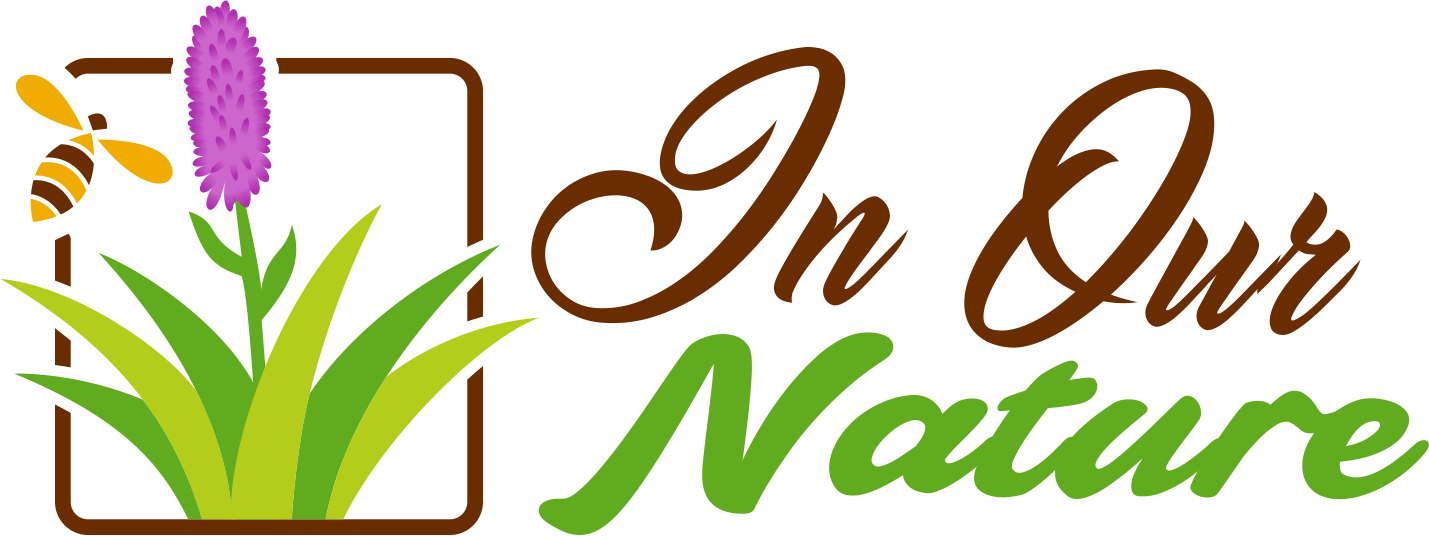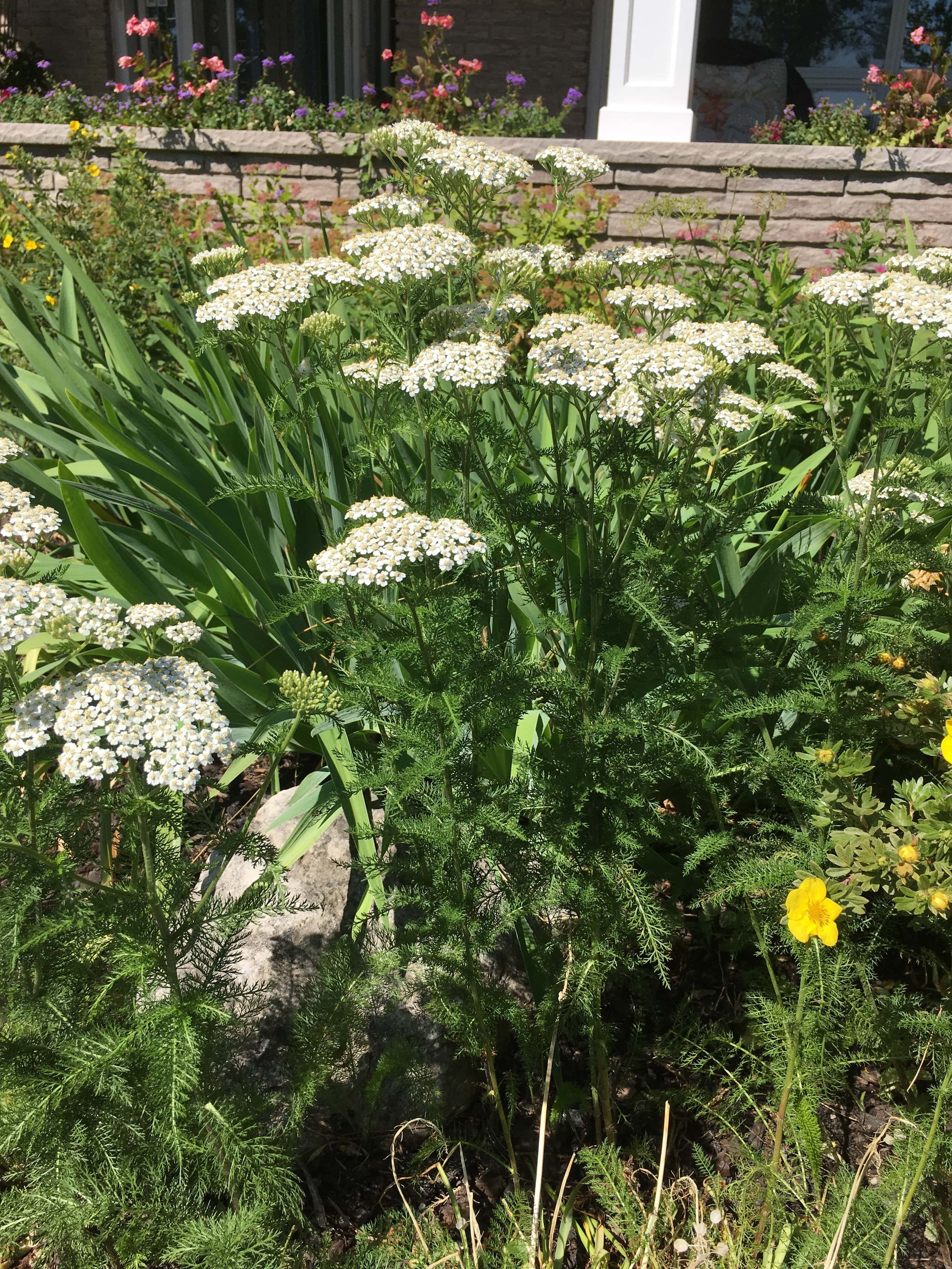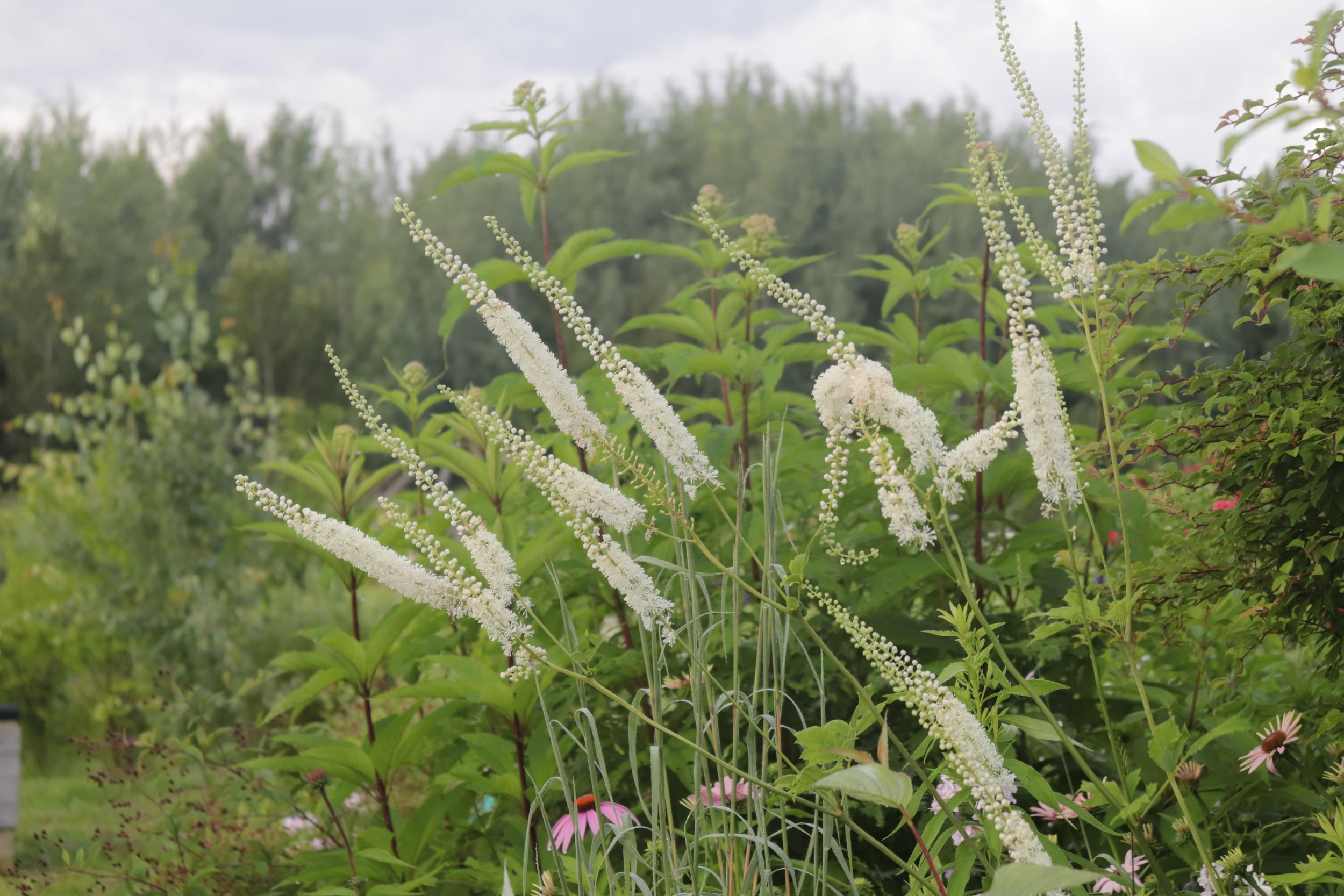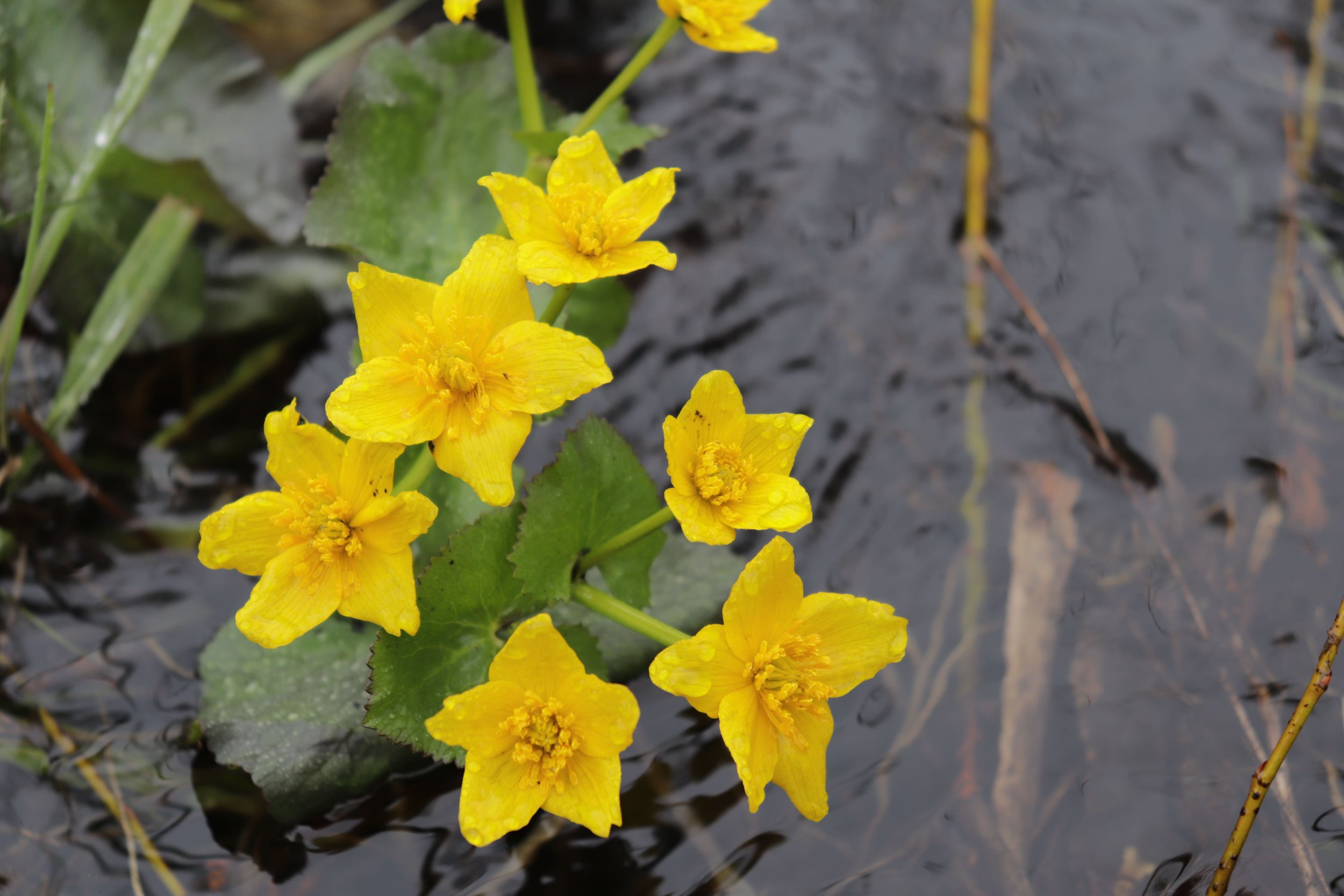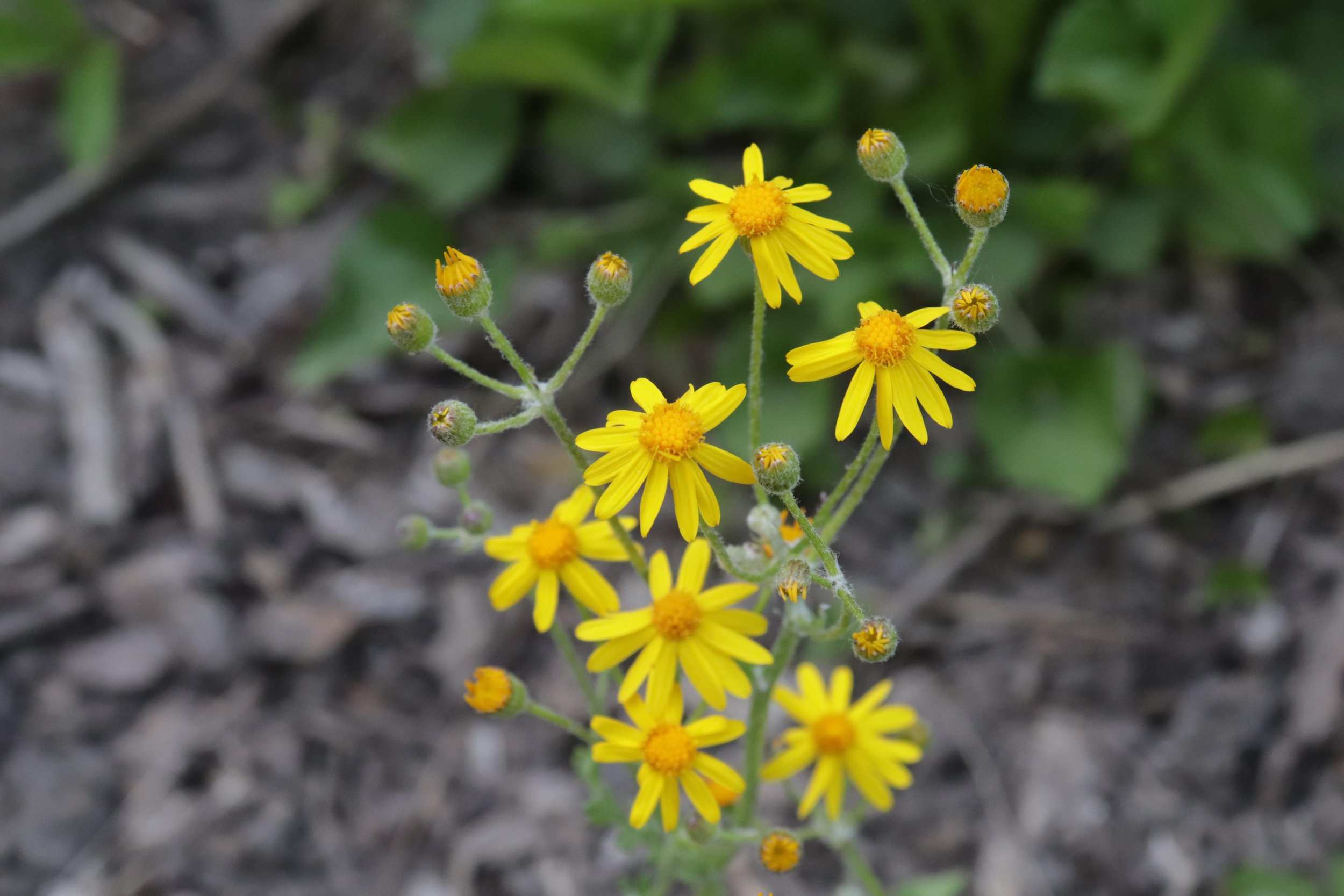Deer & Rabbit Resistant
Native Plants
As much as we like to invite nature back into our yards, it can be heart-breaking and frustrating to have our native plant gardens relentlessly eaten to the ground by rabbits and deer. Fortunately there are native plants that herbivores typically avoid due to toxic foliage, strong smells or rough-textured leaves. These plants can be interplanted among the more tasty plants to help deter herbivory.
It’s important to note that the taste-buds of deer and rabbits will vary by region and that they will eat almost anything if hungry enough. Therefore, these plants are not considered to be deer proof, but deer resistant meaning that these plants are not typically part of their preferred diet.
Deer & Rabbit Resistant Native Plants
(Click on a plant to jump to it)
Yarrow (Achillea millefolium)
Yarrow is a tough plant plant with adaptability to dry, sunny sites. Ideal for meadows and prairies. Deer tend to avoid it due to its textured foliage and strong-smelling leaves.
Actaea spp.
Actaea spp. includes Red Baneberry (Actaea rubra), White Baneberry (Actaea pachypoda) and Black Cohosh (Actaea racemosa). These plants are ideal for shady woodland gardens, adding bold texture and interesting flowers or seed heads. These plants are avoided by most mammalian herbivores due to their toxic leaves.
Agastache spp.
Agastache spp. includes Giant yellow hyssop (Agastache nepetoides) and Giant purple hyssop (Agastache scrophulariifolia). The near-native anise hyssop (agastache foeniculum) can be included here. These plants have a minty taste and aroma, making them unpalatable to herbivores. They grow well in meadows, prairies and woodland edges.
White Snakeroot is an adaptable plant for shade or sun that shows off with clusters of bright white flowers in late summer. It spreads quickly by seeds and thrives in disturbance, making it valuable for restoration. Deer and rabbits avoid eating it due to its toxic foliage.
Alliums (Allium spp.)
Alliums have strong onion or garlic smells that are unappealing to herbivores. You can try nodding onion (Allium cernuum) for dry, sunny sites; Canada wild garlic (Allium Canadense) for naturalizing meadows or wild leek (Allium tricoccum) for moist shade gardens.
Anemones (Anemone spp.)
Thimbleweed (Anemone cylindrica) is ideal for meadows and prairies, wood anemone (Anemone quinquefolia) is the perfect match for woodland gardens while Virginia anemone (Anemone viriginiana) makes its home in meadows and woodland edges. These plants are deer and rabbit resistant although they may sometimes nibble the flowers.
Pussytoes (Antennaria spp.)
Pussytoes are low-growing groundcover plants that thrive in hot, dry, sunny gardens. You can try Field Pussytoes (Antennaria neglecta) or Parlins Pussytoes (Antennaria parlinii), both of which are rarely bothered by herbivores.
Jack-in-the-pulpit (Arisaema triphyllum)
Jack-in-the-pulpit is a beloved spring ephemeral, valued by gardeners for its bold, lush leaves and its interesting pitcher-like flower. Insoluble calcium oxalates in this plant make it almost entirely herbivore proof.
Canada Ginger (Asarum canadense)
Canada ginger is a dependable ground cover for shady gardens, spreading slowly to form colonies of lush heart-shaped leaves. Deer and rabbits avoid this plant due to its strong ginger taste and smell.
Marsh Marigold (Caltha Palustris)
Marsh marigold lights up wet areas of the garden in early spring with cheery yellow blooms. Its leaves go on to provide lush greenery long after the flowers fade. This plant is unpalatable to herbivores due to toxic alkaloids in its leaves.
Harebells may look delicate but they are much tougher than they look, tolerating drought and poor soils! The purple bell-like flowers start blooming in early summer and don't stop until the first frost hits them. All but the hungriest deer and rabbits will avoid eating harebells.
White Turtlehead is an elegant wetland species with tubular white flowers that resemble a turtles head. Despite its affinity for sunny wetlands, it adapts well to average moisture and some shade in gardens. Turtlehead is not often bothered by herbivores.
Geums (Geum spp.)
Deer and rabbit resistant native geum species include prairie smoke (Geum triflorum) which thrives in dry, rocky, calcareous soils in full sun; and Water avens (Geum rivale) which thrive in wet, mucky soils in the sun to part shade conditions of wetlands.
Monardas (Monarda spp.)
The monardas are a group of native plants in the mint family including wild bergamot (monarda fistulosa), bee balm (monarda didyma) and spotted mint (Monarda punctata). Their minty taste and smell make them repulsive to deer and rabbits.
Eastern Prickly-pear (Opuntia cespitosa)
If you didn’t know about eastern prickly-pear already then you’ll be thrilled to discover that Ontario has a native cactus! As you can imagine, the spiny pads provide ideal protection against hungry deer and rabbits.
Ragworts (Packera spp.)
Golden groundsel (Packera aurea) is a spreading groundcover for moist sites in sun or shade. It puts on a luminous display of long-lasting yellow blooms that tower over broad, lush leaves. Balsam ragwort (Packera paupercula) is a dependable choice for tough gravelly or rocky sites in full sun to part shade, tolerating drier conditions and more sun than golden groundsel. These plants are toxic to deer and rabbits so they won’t be eaten.
Mountain Mints (Pycnanthemum spp.)
Being in the mint family, mountain mints are highly resistant to deer and rabbit browse due to their strong minty taste and smell. They thrive in a variety of conditions and are best suited to prairie or meadow gardens. You can try: Hoary mountain mint (Pycnanthemum incanum), Slender mountain mint (Pycnanthemum tenuifolium), whorled mountain mint (Pycnanthemum verticillatum) or virginia mountain mint (Pycnanthemum virginianum).
Early Buttercup (Ranunculus fascicularis)
Early buttercup is an ideal choice for adding early season blooms to dry, sunny gardens with poor soil. Ideal for prairie or rock gardens. The foliage is toxic to mammals and therefore won’t be eaten by deer or rabbits.
Black eyed Susans (Rudbeckia spp.)
Rudbeckias may be eaten by deer and rabbits but are certainly not their first choice. You can try black-eyed susan (Rudbeckia fulgida) or brown-eyed susan (Rudbeckia hirta) for prairie and meadow gardens or cutleaf coneflower (Rudbeckia laciniata) for moist conditions in sun or shade.
Bloodroot (Sanguinaria canadensis)
Bloodroot makes a great groundcover plant for shade with its bold leaves and delicate white flowers. It produces a toxic red sap making it completely unpalatable to deer and rabbits.
Blue-eyed Grass (Sisyrinchium angustifolium)
Blue-eyed Grass is a unique member of the iris family and is not really a grass. It has grass-like leaves and small, but numerous, purple flowers with yellow centers. It is easy to grow and looks great along borders or when massed. It is typically not consumed by deer or rabbits.
Foamflower (Tiarella spp.)
Heartleaf Foamflower is a wonderful, spreading groundcover for woodland and shade gardens. It sports ground-hugging, heart-shaped leaves and spires of creamy white flowers in mid-spring. Deer and rabbits may eat foamflower if other food is scarce but they will generally leave it alone.
Rues (Thalictrum spp.)
Purple meadow rue (Thalictrum dasycarpum) and king of the meadow (Thalictrum pubescens) thrive in sunny, moist gardens while also tolerating some shade. Early meadow rue (Thalictrum dioicum) is ideal for shady woodland gardens. The beautiful, lacy foliage of the rues is toxic to deer and rabbits and is therefore very unlikely to be browsed by them.
Culvers Root (Veronicastrum virginicum)
Culver's Root shows off with spires of white flowers that bloom from the bottom up and are always buzzing with bees. It's upright, clumping form makes it perfect as a structural plant in your garden. Suitable for meadow and prairie gardens. Deer and rabbits don’t often touch this plant.
